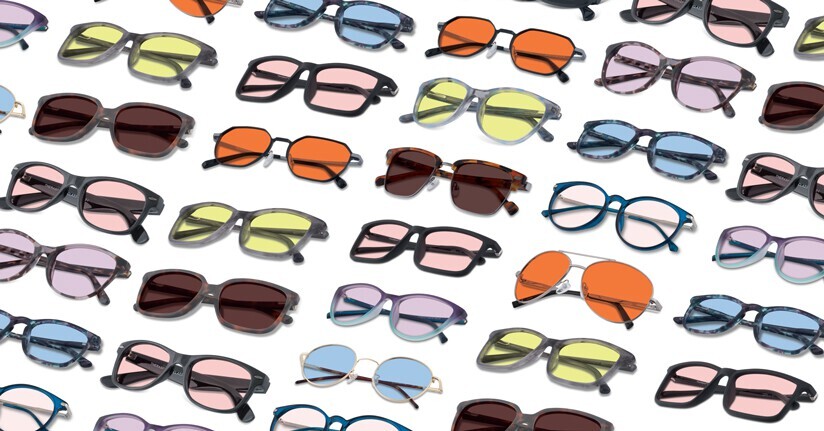The Presence of Light Sensitivity, Photophobia in Meningitis
Meningitis involves inflammation of the meninges around the brain as well as spinal cord, so it is typically associated with symptoms and signs that result from this inflammation. A strong sensitivity to light (called photophobia)—often a standalone symptom or a byproduct of headaches that can resemble migraine—is a frequent neurological challenge associated with the disease. We take a closer look at this phenomenon reported by the majority of patients.
How often does light sensitivity occur from meningitis?
Approximately 1,000 Americans develop meningitis annually, with the infecting agent described as either bacterial or viral. Symptoms often resemble the flu, but amazingly can lead to long-term disabilities for about 20% of patients. Chronic or recurring headaches and photophobia are among those physical issues that can linger for many years or even for life, regardless of meningitis type. And even if one’s sensitivities are temporary, they are often disabling.
Upon looking at the general prevalence of photophobia in meningitis, one study showed that 88% of younger bacterial meningitis patients reported suffering from photophobia.1 There may be less likelihood of its onset for viral meningitis, but still nearly half were light sensitive. And a specific viral strain, EV-positive (which accounts for 80% to 92% of all viral meningitis), was considered one of the most likely of the subtypes to cause photophobia.2 Regardless of source, the evidence clearly shows that sensitivity to light is a regular feature of the condition.
Why does meningitis cause photophobia?
Since meningitis is an inflammation of brain and spinal membranes, it should be no surprise that it can interfere with neurological processes—one of which may result in photophobia. In fact, one of the earliest warning signs of meningitis is this aversion or reaction to light, often co-occurring with nausea, stiff neck and headache.
Furthermore, an intense meningitis-related headache can often resemble migraine or other headache disorders, which are separately known to cause or exacerbate light sensitivity. In fact, 95% of post-infection patients in one study had severe, bilateral headaches–the majority of which were described as "abrupt onset" and the worst they had ever experienced. Although it is unclear if these symptoms could be directly classified as a primary headache disorder like migraine, they commonly displayed migraine features like photophobia.3
Lastly, many people experience temporary eyesight difficulties due to optic nerve swelling after meningitis. With this condition, patients might continue to experience photophobia as a lingering effect.
How long might post-meningitis photophobia last?
Photophobia and light sensitivity can linger well after the meningitis has been successfully treated, up to several months or years; if a chronic headache disorder develops as a result of the infection—a harsh reality for as many as one-third of patients—then it may never cease.4 Interestingly, in some cases, these symptoms might not even manifest until as much as a year after the acute infection has subsided.
Furthermore, patients who have either bacterial or viral meningitis often have a reduced quality of life, especially in their younger years.4 Light sensitivity and headache symptoms are also independently linked to poorer life outcomes as well as emotional symptoms. This ultimately stresses the importance of proper diagnosis and treatment early on in the lifecycle of the infection in order to avoid these consequences.
References:
1Amarilyo G, Alper A, Ben-Tov A, Grisaru-Soen G. Diagnostic accuracy of clinical symptoms and signs in children with meningitis. Pediatr Emerg Care. 2011 Mar;27(3):196-9. doi: 10.1097/PEC.0b013e31820d6543.
2Patriquin G, Hatchette J, Forward K. Clinical presentation of patients with aseptic meningitis, factors influencing treatment and hospitalization, and consequences of enterovirus cerebrospinal fluid polymerase chain reaction testing. Can J Infect Dis Med Microbiol. 2012;23(1):e1-5.
3Lamonte M, Silberstein SD, Marcelis JF. Headache associated with aseptic meningitis. Headache. 1995 Oct;35(9):520-6.
4Neufeld MY, Treves TA, Chistik V, Korczyn AD. Postmeningitis headache. Headache. 1999 Feb;39(2):132-4.

TheraSpecs® Glasses for Light Sensitivity
Find the glasses that fit your needs and lifestyle, and stay protected from screens, fluorescents, unwanted blue light, sunlight, flashing lights, and more.
Shop Now



